Female Orphan Asylum, London / Beddington, Surrey
The Female Orphan Asylum was instituted in 1758, largely through the efforts of Sir John Fielding, who raised donations for an establishment 'to preserve friendless and deserted girls under twelve years of age, from that state of wretchedness which might expose them to all the miseries of prostitution.' The Asylum's original premises were a former inn, called the Hercules' Pillars, at the junction of Westminster Bridge Road and Westminster Road, Southwark, with the first children being admitted on July 5th, 1758. The girls were taught and employed in reading, knitting, sewing, making the beds, kitchen work, etc. with the intention of making them 'good housewives, and useful members of society.'
The Asylum was rebuilt in 1824 to a design by L.W .Lloyd which formed three sides of a quadrangle. A chapel at the centre was open to the public on Sundays and collections made for the benefit of the children, 'whose cleanly and healthy appearance cannot fail to interest the spectators.'
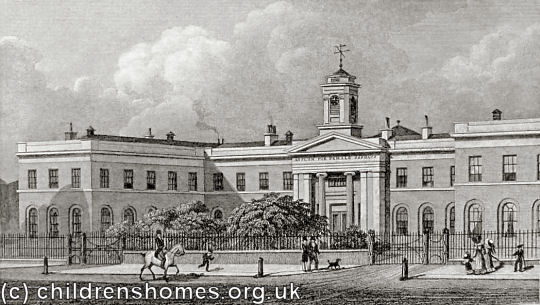
Female Orphan Asylum, 1828. © Peter Higginbotham
In 1866, the orphanage moved to Beddington, near Croydon, to an ancient mansion house called Carew Manor, where accommodation was provided for 150 girls, aged from 7 to 10 years at their time of admission.
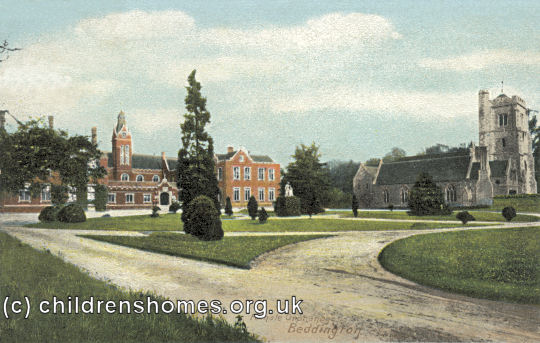
Female Orphan Asylum, Beddington c.1905. © Peter Higginbotham
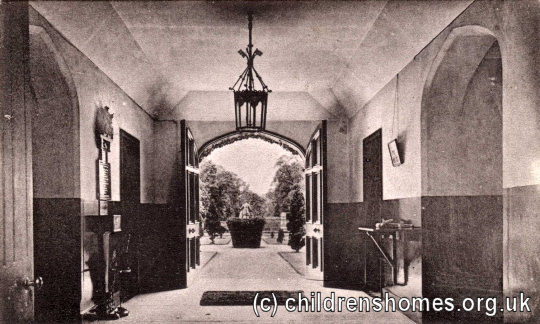
Female Orphan Asylum entrance hall, Beddington c.1910. © Peter Higginbotham

Female Orphan Asylum dining-hall, 1875. © Peter Higginbotham
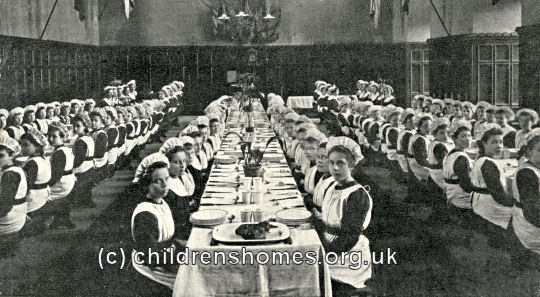
Female Orphan Asylum dining-hall, c.1907. © Peter Higginbotham
Here is a summary of the institution's details from 1890:
The 'gratuity' was an award of two guineas (£2.20) after successful completion of two years' domestic service.
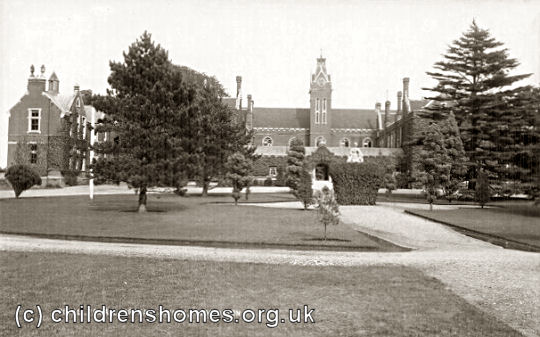
Female Orphan Asylum, Beddington c.1907. © Peter Higginbotham

Female Orphan Asylum, Beddington c.1910. © Peter Higginbotham
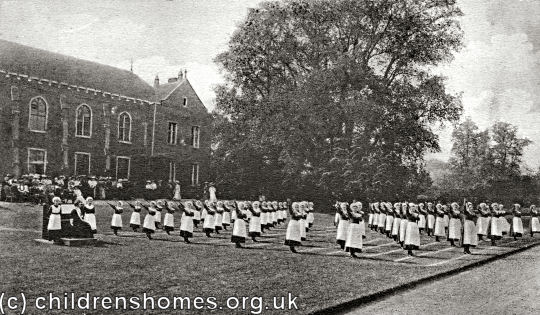
Girls at drill, Female Orphan Asylum, Beddington c.1910. © Peter Higginbotham
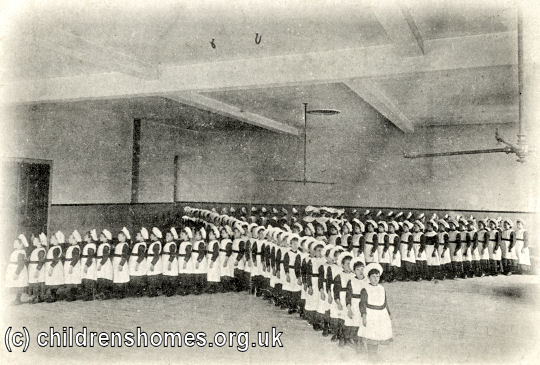
Female Orphan Asylum marching drill, Beddington c.1910. © Peter Higginbotham
In 1924, the administration of the orphanage was merged with that of two other institutions, the National Orphan Home, and the Hans Town School of Industry at Chelsea, with the new body taking the title of the Royal Female Orphanage.

Female Orphan Asylum, Beddington c.1910. © Peter Higginbotham
In 1943, the Beddington orphanage moved to 743 London Road, High Wycombe where it continued in operation until its final closure in 1968.
Of the orphanage's various locations, only the Beddington premises still exist, now occupied by Carew School and local council offices.
Records
Note: many repositories impose a closure period of up to 100 years for records identifying individuals. Before travelling a long distance, always check that the records you want to consult will be available.
- London Borough of Sutton: Local Studies & Archives, Level 2A, Central Library, St Nicholas Way, London SM1 1EA. Holdings include: Court of Guardians minutes (1887-1949); Orphanage Committee minutes (1871-1968); Lists of children (1890-1968); Annual reports and lists of Guardians (1886-1961); Various prints and photographs, etc.
-
Ancestry UK
has Lists of children (1890-1913).
Census
Bibliography
- Bentham, Rev. Thomas A History of Beddington (1923, Murray)
Links
- None identified at present.
Except where indicated, this page () © Peter Higginbotham. Contents may not be reproduced without permission.


